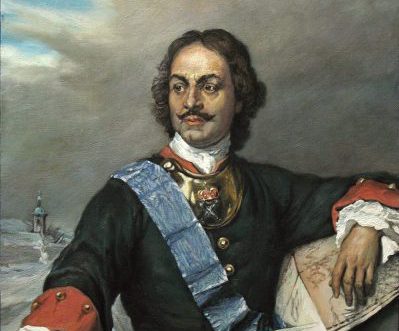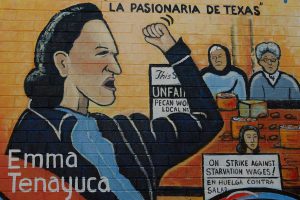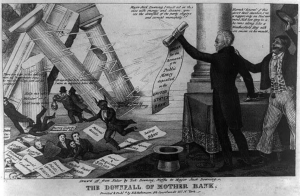Russian historian Nikolai Pogodin once said, “The Russia of today, that is to say, European Russia, diplomatic, political, military, commercial, industrial, scholastic, literary—is the creation of Peter the Great. Everywhere we look, we encounter this colossal figure, who casts a long shadow over our entire past.”1 Peter I, also known as Peter the Great, was the tsar and emperor of Russia from 1682 to 1725. He played a crucial role in westernizing Russia by changing its economy, government, culture, and religious affairs.2 By doing all of this, Russia was able to expand and become one of the most powerful countries in the eastern hemisphere.

Peter Alexeyevich was born in 1672 and was the son of Tsar Alexei Milhailovich of Russia. At the age of ten, Peter and his half-brother Ivan V both shared the title of tsar after their father had passed away. When Ivan died in 1686, Peter became the single ruler of Russia. Around this time, he began taking great interest in sailing, meeting foreigners, and military command.3 In 1695, Peter fought against the Turks, and after seeing how weak his own navy was, he sent several of his people to European maritime powers to study shipbuilding and navigation. Just two years later, Peter himself traveled around Europe, learning about Europe’s customs, military, religion, and economy. Fascinated with the foreign customs he encountered, he returned to Russia and implemented aspects of European culture into his own country.4
Upon returning to Russia, Peter began enforcing changes to break away from old Russian traditions. He ordered all of the men in the country to shave off their beards, forcing anyone who kept their beards to pay an extra tax. The old Russian calendar was replaced with the Julian calendar that the rest of Europe had adopted.5 Even Peter’s portraits were decorated with western imagery, drawing inspiration from the Romans in its allegory to emphasize his strength and power. Peter also established a new government hierarchy, allowing lower class citizens to rise in rank and become nobles. Whenever Peter was away from Russia, he would have a senate that he appointed to oversee all judicial and administrative functions. The person in charge of the senate was given the title “ober-procurator,” and was a direct agent of the tsar. In 1717, Peter created several branches in the government that specialized in managing the country’s economy, navy, and foreign affairs.6 Additionally, Peter came up with a more simplified alphabet so it would be easier to learn to read the Russian language. The new alphabet, called civil script, was used in printing out secular works for the public.7
Peter’s military conquests were also beneficial to Russia. In 1700, he waged war on Sweden in order to control the Baltic Sea. Despite some minor losses, Peter managed to best Sweden by triumphantly defending Russia against King Charles XII’s Swedish army and capturing critical Swedish ports in the Baltic Sea. The Treaty of Nystadt in 1721 gave Russia official control of several regions around the Baltic Sea, including Livonia, Ingria, and Estonia. As a result, Peter was awarded the titles Emperor, the Great, and Father of the Fatherland. Just a year later, Peter started a campaign against Persia, and he successfully held control of the ports in Baku and Derbent in the Caspian Sea. Intensive recruitment, home produced weapons, organized supplies, and having foreign officers as trainers all contributed to Russia’s military success. Having a peasant population that was willing to serve, a harsh climate, and a heavily fortified navy almost seemed to make Russia invincible.8

Starting in 1712, St. Petersburg became the capital of Russia. Peter used the city to construct palaces, churches, and government buildings in western European fashion. Its naval academy, Peter’s most successful technical school, was taught by British instructors. The city was provided with street lighting, and the Chief of Police supervised the public welfare. As part of Peter’s policy, all of the townspeople were required to wear European fashioned clothes. Peter’s reasoning for these changes can be summed up in his own words: “Even though something may be good, if it is new our people will not do it.”9 Peter did not hesitate to use force when necessary to enforce these changes. He was very strict, and both peasants and nobles worked tirelessly in their daily lives. Not only was it mandatory for parents to teach their sons about service to the country, but it was also expected for citizens to work their entire adult lives.10
All of these sudden cultural changes led to controversy within the nation. Some religious traditionalists saw Peter as a sort of Antichrist, and there were several occurrences of revolt during his reign. For example, Peter’s son, Alexei Petrovich, was charged with treason for trying to assassinate his father; he and many of his co-conspirators were executed as a result.11 While Peter had many critics, his contributions to Russia greatly outweighed any negative effects.
Peter continued to cultivate Russia until his death in 1725.12 All in all, Peter the Great’s reign saw dramatic changes in Russia and helped make it into a wealthier and powerful country. In the end, Peter the Great had brought cultural revolution to Russia, sowing the seeds for the modern Russia that we know today.
- Encyclopedia of Russian History, 2004, s.v. “Peter I,” by James R. Millar. ↵
- Encyclopedia of Russian History, 2004, s.v. “Peter I,” by James R. Millar. ↵
- Encyclopedia of Russian History, 2004, s.v. “Peter I,” by James R. Millar. ↵
- Encyclopedia of European Social History, 2001, s.v. “Peter I (1672-1725),” by Peter N. Stearns. ↵
- Encyclopedia of European Social History, 2001, s.v. “Peter I (1672-1725),” by Peter N. Stearns. ↵
- Salem Press Biographical Encyclopedia, 2016, s.v. “Peter the Great,” by Surendra K. Gupta. ↵
- Encyclopedia of Russian History, 2004, s.v. “Peter I,” by James R. Millar. ↵
- Encyclopedia of Russian History, 2004, s.v. “Peter I,” by James R. Millar. ↵
- Encyclopedia of Russian History, 2004, s.v. “Peter I,” by James R. Millar. ↵
- Encyclopedia of Russian History, 2004, s.v. “Peter I,” by James R. Millar. ↵
- Encyclopedia of Russian History, 2004, s.v. “Peter I,” by James R. Millar. ↵
- Encyclopedia of Russian History, 2004, s.v. “Peter I,” by James R. Millar. ↵



36 comments
Jose Chaman
This has been a really informative and fun article to read. Although I already knew a little about the history of Peter the Great, I found it interesting to discover that he had a half-brother named Ivan V. I also found of great interest that Russia, before Peter I, had not developed such a colossal defense system, and that after the arrival of his young but focused tsar, everything changed and propelled Russia as we know today.
Rhoda Wells
I thought I had read somewhere that Peter the Great wanted Russian children to learn to read and write at a time when most Russian peasants who were illiterate. However, I can’t find anything about that today.
Uzziyah Cohen
Peter the Great had a tremendous impact on Russia in every aspect from politics to education to religion; his greatness thoroughly moves me! Before reading this article, I never had any idea that Peter the Great influenced Russia to the extent that this article expressed. This article serves to intensify the reader’s interests in Russia and its development as a Society. Many leaders hope to have a meaningful impact on their country; however, Peter the Great certainly accomplish this feat in multiple aspects. I love that this article included Peter the Great’s influence on Russia’s language in an attempt to make education more accessible to the lower class citizens.
Danielle Slaughter
Peter the Great had good intentions when westernizing Russia, but it would have helped his case if he didn’t try to stifle any remnants of his homeland’s culture. Regardless, his contributions to Russia’s navy and military forces are irrefutable, and under him, Russia prospered. Such a wonderful article about a fascinating historical figure.
Anna Guaderrama
Okay, I don’t know why but I remember hearing the name in history classes and I always had this idea that he was some fat pale ruler, I stand corrected after reading this article. It is interesting to read about how he strayed away from tradition in preference of enforcing changes. I found it odd and intriguing how he forced men to shave their beards…I would’ve never imagined that being a thing in any society.
Samuel Ruiz
I have always found it very interesting that in early modern history, many men make such big impacts just by either being important or by doing something incredible. In this case, Peter Great was both important and did interesting works. I was most interested in the fact that he traveled to Europe to study European culture and brought it back to Russia to implement it in that society. What a fun way to study abroad in a sense!
Timothy ODekirk
This article was extremely interesting to me and the title picture of Peter the Great really dragged me in to the article. I found it interesting about the power of Peter the Great and how determined he was to rule. Peter the Great’s reign affected the lives of peasants and civilians as well, forcing them to work their entire adult lives. I also found it interesting about Peter the Great’s naval power and his need to have a strong and powerful navy. This was an absolute interesting article about a leader who made Russia the power that they are today.
Tyler Sleeter
Great article with very good information. I knew very little about Peter the Great before reading your article and I found it very interesting. It surprised me to learn that Peter allowed lower ranking people to work their way up to a higher class; this was not a common practice in Europe. It also surprised me to read that Peter expected not just the lower classes to work hard all day, but the nobility as well. This was also not a common practice in Europe, where many nobles rarely worked. It seems to me that maybe it was this work ethic that made Russia the empire it was at this time.
Troy Leonard
you did a great job on writing this article and giving great details about peter the great. Prior to reading this article I have heard of him name but not what kind of influence on Russia. I found it really interesting how he made the men cut off their beards or make them pay extra taxs. to me it seems like he was just trying to clean up the country an make everyone present themselves better.
Andrew Rodriguez
Peter the great, wasn’t afraid to advance on different ideals. Which was brave in seeking for inspiration from other country’s in the west, even though he is in the east. I knew some of Peter the Great, but this article was very informative in what he accomplished. For him to make all the nobles to shave and have penalties for those who didn’t. Was very different for the noble, in that no one would make them change. The impact he left on Russia will never be matched, he modernized Russia to the world.